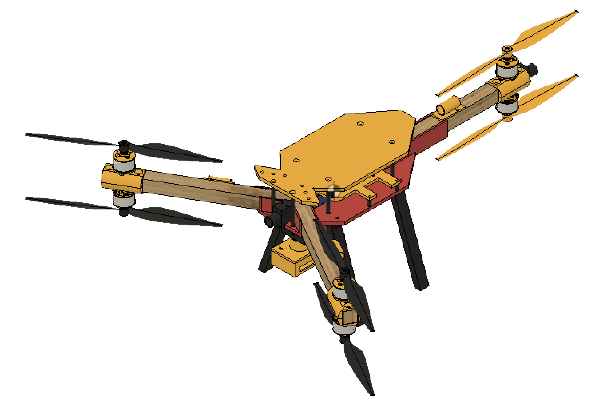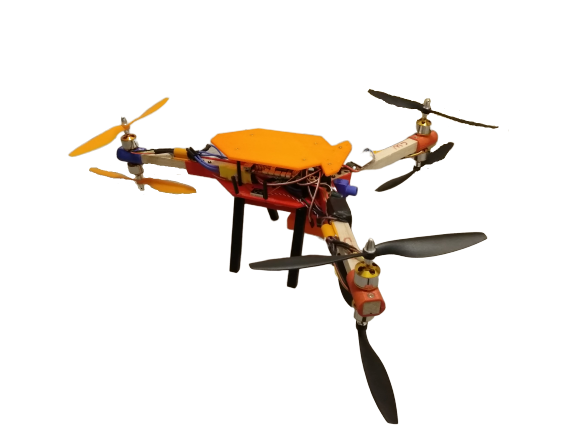This project is taken from and is an extention of my master's dissertation which can be found
here
|
Unmanned Aerial Vehicles, UAVs, are aerial systems not directly controlled by humans onboard the vehicle.
There are many types of UAV platforms which are chiefly defined by the characteristics of
their mechanical constructions, One such type of UAVs are multirotors, defined as such due
to their multiple rotor wing actuators. The framework of this project was set around the
design and development of control software for model aircraft. From this theme,
the following ojectives were derived:
|
- Design and construct a multirotor UAV
- Develop a mathematical model representing multirotor dynamics
- Develop a dynamic simulation of multirotor behaviour
- Develop some flight control system
- Implement the flight control system to interface with multirotor hardware
- Investigate the application of advanced control schemes
- Implement the flight control software on some embedded processor
- Compare the performances of the simulation and hardware implementations
|
The Platform of Choice is a Y6 Hexarotor |
 |
 |
|
This kind of configuration has actuators in 3 counter-rotating co-axial pairs forming 3 motor groups.
As with other multirotors, a coaxial Y6 hexarotor is mechanically simpler than a classical helicopter
since it has propellers with constant non varying pitch removing the need for a swash plate and its actuation
mechanism. The advantages of Y6 hexarotors with respect to other multirotors and classical helicopters is
that the coaxial configuration increases the potential thrust output without increasing the frame size,
while naturally eliminating the loss of efficiency due to direct torque compensation in each motor group,
thus better stability. However, the disadvantages are higher energy consumption per unit frame size due to
the six propulsion units and inefficiency due to the aerodynamic interaction present with having stacked
propellers.
|




